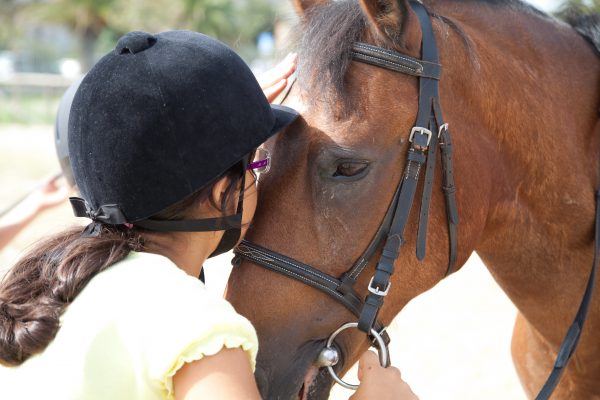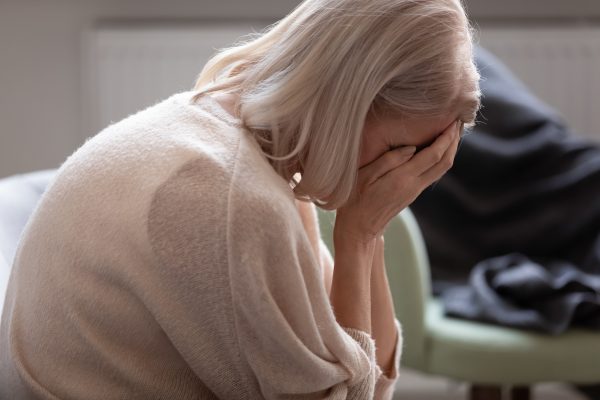Part 3:
Why We Need to Train Our Horses Ourselves
Published on July 9th 2022.
by Noah Tillman-Young
HERE’S WHAT WE KNOW
Part 2 (of 6): We’ve Got It All Wrong…
- Modern horse training was never actually set up for us to be successful.
- Horse trainers don’t actually teach you to bond with your horse.
y husband told me that if my horse threw me again, I’d have to sell him.”
That’s the exact message I received not too long ago from a woman named Susan (not her real name) in response to one of my videos.
Susan was on the brink of retirement. Her kids were finally all out of the house, and she found herself with some extra time on her hands. She’d taken the opportunity to get back to something she’d always loved — horseback riding.
Now, Susan loved riding when she was a kid. “I was completely fearless,” she told me proudly as she recalled her time with her childhood mare, Sandy.
“It was like Sandy and I were connected. She would follow me anywhere! It was like we shared a brain or something.”

With those fond memories in mind, Susan had gone out and bought a Quarter Horse mare named Angel.
But things were different this time around. Angel was anything but angelic.
Angel was stubborn and flighty, and Susan was struggling to form a real bond with her. And on top of that, Susan found that her old confidence was gone this time around.
Of course, it didn’t help that Angel had already thrown her a few times. She’d broken her arm during one fall. And now each bruise and broken bone ate away at her confidence and stole a little more of her joy.
Susan’s friends told her that working with a horse was dangerous. That she should get someone else to train Angel — someone with the balance and strength she once had. She began to wonder if working with Angel herself was a fool’s errand.
Susan didn’t know what to do. And like most people at the end of their rope with a horse, she decided to send Angel off to a trainer.
Unfortunately, her results were typical (that is… they didn’t last).
Angel came back a new horse!
… For a few days…
Before long she’d slid right back into her bad habits.
She bit at Susan when she was being fed and groomed. She’d kicked out when Susan had to pick her feet. She jigged under the saddle, she spooked at everything that moved, and she was quick to dump Susan at the first sign of trouble.
Susan was at a loss.
And now, her husband was getting worried. His threat had lit a fire under her. She knew that if she had to sell Angel, she’d likely never ride again. Her confidence had been wrecked during this whole ordeal.
Desperate for a solution, Susan found me and reached out.

Susan’s problem isn’t unique. In fact, it might sound pretty familiar to some of you. It’s a problem that SO MANY horse owners today experience, because it’s a problem that is BUILT IN to modern horse training.
We’ve been taught that when we encounter a problem with our horse, we should hand them off to someone else. Someone with more “experience” and “expertise.” Someone with a magic touch.
But the truth is that sending your horse to someone else will NEVER solve your problem.
That’s because, in most cases, the horse is NOT the problem. The real problem that there is a DISCONNECT in your relationship with your horse.
The only way to really fix behavior problems with your horse, is first to fix your relationship with them. And you can’t fix a relationship by spending more time apart.
Strong relationships aren’t relationships that never experience a problem. Anyone who’s been married can tell you that. Every relationship will encounter tough times — we even built it into our marriage vows: “in good times and bad, in sickness and health.”
The true test of a relationship comes in how you deal with those problems. Having a strong and lasting relationship isn’t about successfully avoiding all problems, it’s about learning to solve those problems TOGETHER…
…CONNECTED!
The same is true with our horses.
You have to teach your horse they can trust you in a crisis. That you can work TOGETHER to solve any problem you encounter. That being with you (not the trainer!) is the safest place they can be.
You see? If you want to fix problem behaviors, you first have to fix YOUR relationship with YOUR horse. And in order to do that, you have to train your horse YOURSELF.
You have to build an unbreakable, trusting bond with them so they know you’re in it together, no matter what.
I’d like to share a video with you that shows the type of bond you can experience when you train your horse yourself:
I mean, think about it. When you send your horse off to a trainer, all you’re really teaching them is that they can trust that trainer to get them through the tough times. That you’re not in it with them. That when things get hard, you send them away.
Sending your horse to a trainer might teach your horse a few new skills, but it won’t fix behaviors that originate from a lack of trust in YOU.
And even in the best case scenario, when you send your horse off to a trainer, you’re just paying for your horse to bond with someone else!
That’s why you’ll see horses who behave one way around the trainer, and a totally different way when they’re back home with their owners.
Around the trainer, the horse knows what’s expected. He knows that he can trust the trainer, and that the trainer won’t ask him to do anything that might hurt him.
But you haven’t spent that time bonding with him. Your horse doesn’t know for sure whether you’ve got his back in an emergency. He isn’t sure whether what you tell him to do is a good idea…
…And so, all the old problems come right back.
Problems are a sign of broken trust and broken connection.
You see, it’s a little ironic. Most people send their horse to a trainer because they worry that it’s not safe for them to try training their horse themselves, when in reality, it’s the exact opposite!
Most injuries occur because of a lack of trust between horse and rider BECAUSE they aren’t intentionally training and connecting with their horse THEMSELVES.
And sending your horse off to a trainer will never solve that problem.
In the next part, I’m going to show you why the safest thing you can possibly do is to train your horse yourself.